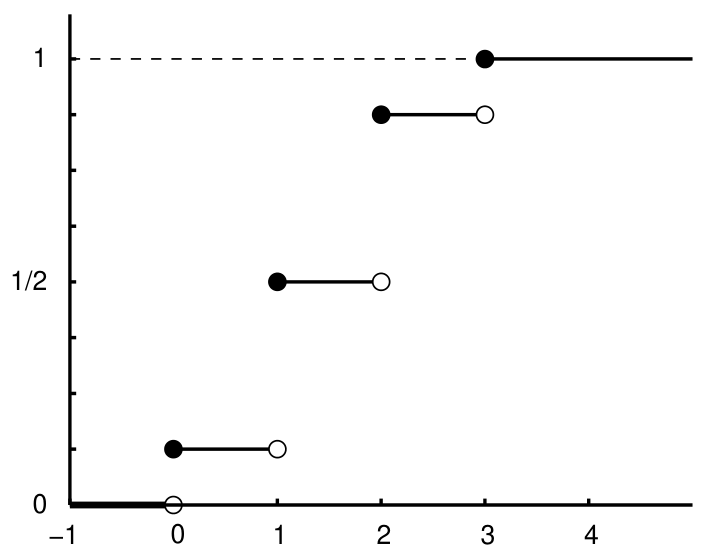Theory 1
Random variable
A random variable (RV)
on a probability space is a function . So
assigns to each outcome a number.
Note: The word ‘variable’ indicates that an RV outputs numbers.
Random variables can be formed from other random variables using mathematical operations on the output numbers.
Given random variables
Suppose
Random variables determine events.
- Given
, the event “ ” is equal to the set - That is: the set of outcomes mapped to
by - That is: the event “
took the value ”
Such events have probabilities. We write them like this:
This generalized to events where
The axioms of probability translate into rules for these events.
For example, additivity leads to:
A discrete random variable has probability concentrated at a discrete set of real numbers.
- A ‘discrete set’ means finite or countably infinite.
- The distribution of probability is recorded using a probability mass function (PMF) that assigns probabilities to each of the discrete real numbers.
- Numbers with nonzero probability are called possible values.
PMF
The PMF function
, for a discrete RV, is defined by:
A continuous random variable has probability spread out over the space of real numbers.
- The distribution of probability is recorded using a probability density function (PDF) which is integrated over intervals to determine probabilities.
The PDF function for
(a CRV) is written for , and probabilities are calculated like this:

For any RV, whether discrete or continuous, the distribution of probability is encoded by a function:
CDF
The cumulative distribution function (CDF) for a random variable
is defined for all by:
Notes:
- Sometimes the relation to
is omitted and one sees just “ .” - Sometimes the CDF is called, simply, “the distribution function” because:
The CDF works for a discrete, continuous, or mixed RV
- PMF is for discrete only
- PDF is for continuous only
- CDF covers both and covers mixed RVs
The CDF of a discrete RV is always a stepwise increasing function. At each step up, the jump size matches the PMF value there.
From this graph of 
we can infer the PMF values based on the jump sizes:
For a discrete RV, the CDF and the PMF can be calculated from each other using formulas.
PMF from CDF from PMF
Given a PMF
, the CDF is determined by: where
is the set of possible values of . Given a CDF
, the PMF is determined by: